The Riskiest Locations For Swimming
Traveling to far-away destinations can make life much more exciting. And there are so many beautiful bodies of water that might look very inviting for those of us who love to swim.
However, not all of these places are safe to swim. If you take a dip in any of these locations, it might be your last. Swimmers beware!
The Boiling Lake
The name alone is reason enough not to swim in this lake located in Dominica. True to its name, this lake is dangerous due to the hot magma that resides beneath the surface. The magma makes the water hit a burning point!

Source: wikimedia commons
So, unless you want to cook like a potato in a pot on a stove, this is not the place you want to take a swim.
Jacob’s Well
This beautiful lake lures you in with its crystal clear waters. The water is so clear you can see to the bottom of certain parts of the lake. However, the beauty is hiding some real danger beneath the surface.
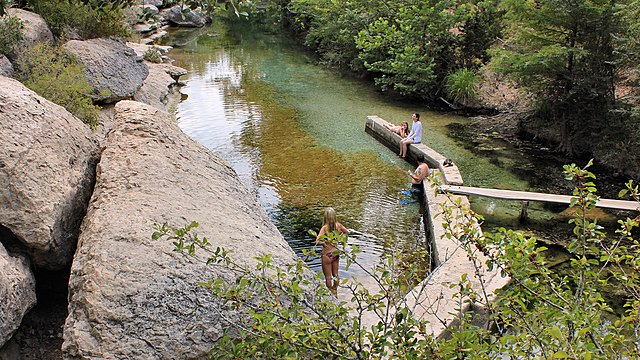
Source: wikimedia commons
There are underwater tunnels and caves in the depths of the water that are hidden. Some swimmers have traveled into the caves never to return. Some people wandered in not realizing the danger until it was too late.
The Nile River
The Nile River has earned its name in the textbooks as very important historically as well as for being the longest river in the world. You might be wondering what makes this river so frightful.

Source: wikimedia commons
Well, it’s not the river so much as what lives in it that adds an element of real danger. Hungry crocodiles live in this river resulting in about 100 crocodile attacks per year in the African Nile. This is a far larger number than shark attacks.
Hanakapiai Beach
This stunning Hawaiian beach lures you in for a swim. The blue water and fine sand are enough to call to any water lover. However, this beach is also home to some really rough riptides.

Source: wikimedia commons
The rough waters can pull you out and tire you. Swimmers have been pulled out to sea which has resulted in over 80 deaths.
Lake Nyos
This crater lake in Cameroon, Africa was created as a result of an ancient asteroid. It is located directly in line with the Cameroon Volcanic Line where there is a lot of volcanic activity.

Source: Wikimedia Commons
Personally, volcanic activity is not something I want close to me in my swimming environment. There have been some eruptions that have been deadly to more than 1,000 people in the vicinity. In short, find another place to swim!
Lake Chagan
Lake Chagan is actually commonly referred to as “Nuclear Lake” and if that isn’t reason enough to avoid it, then we don’t know what is. True to its name, this lake in Kazakhstan was formed from a nuclear bomb detonation.

Source: wikimedia commons
The bomb created this deep crater and the water inside is now extremely toxic. If you’re looking for a natural swimming pool to dip your toes in, this certainly isn’t the one.
Laguna Caliente
If you don’t speak Spanish, the name of this body of water directly translates to “hot lagoon”. This lagoon is not just hot because it’s located in Costa Rica where the sun beats down. It is so very hot because it’s located in the center of a volcano.
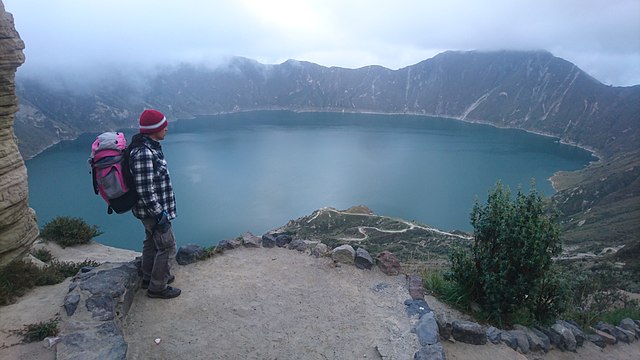
Source: wikimedia commons
That’s right. As blue and inviting as that water might look, it will almost certainly burn your skin right off. Ouch! The area is so dangerous that you have to have a permit just to explore the surrounding area.
Mono Lake, California
Mono Lake is located just outside of Lake Tahoe, a more well-known lake in sunny Califonia. Many people explore the fascinating geology of the lake when they take a camping trip to Tahoe, but it has been drained of many of its vital resources.

Source: wikimedia commons
It’s left with very unbalanced nutrients making it incredibly toxic for humans. But, if you’re in the area and looking for a lake to swim in, just visit Lake Tahoe right next door.
Blue Lake
Blue Lake in Russia is known for its (you guessed it) blue color! Scientists and visitors have been mesmerized and perplexed by the state of the lake’s color for quite some time. Apparently, the color is a result of hydrogen sulfide in the water.

Source: wikimedia commons
The other fascinating part of this lake is that no one has managed to reach the bottom of it. Thus, it’s gained a reputation for being something of a bottomless pit. This mystery has created much interest and a level of danger to the lake. Do you dare to swim in it?
Gulf of Thailand
The Gulf of Thailand is full of very dangerous creatures that can severely harm you while you’re trying to take a relaxing swim. No jellyfish sting is pleasant, but one of the worst ones comes from the box jellyfish.
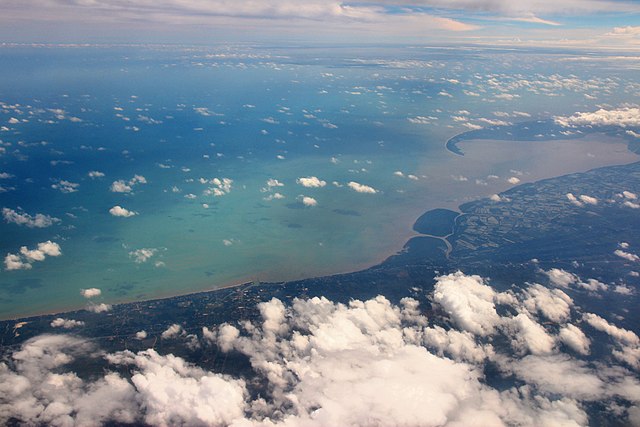
Source: wikimedia commons
The sting from a box jellyfish can paralyze and even kill you! You do not want to come into contact with these guys. In our opinion, it’s not worth the risk.
Myrtle Beach
While this beach might appear like any other, there are 2 major factors that contribute to its dangerous nature. First, it is known to be home to some incredibly strong riptides that have carried swimmers out to sea.

Source: wikimedia commons
Additionally, it is home to many cannonball jellyfish. Like the box jellyfish, their sting can paralyze you and, in severe cases, kill you. This combination can result in drowning, which is not what you want for your dip in the ocean in South Carolina.
Lake Kivu
Lake Kivu in Rwanda has earned a name as one of the most dangerous lakes on the planet. It is known as an “exploding lake”, meaning it can erupt on occasion as a result of the unstable ground it rests on.

Source: wikimedia commons
The nearby volcano adds to the instability of this body of water as well. To make matters worse, when the lake erupts, it releases carbon dioxide into the air and that CO2 is deadly.
West End in The Bahamas
The Bahamas are islands known for their stunning blue waters. It’s an increibdly popular tourist destination for this very reason. While some areas are safer than others, some parts of the islands are filled with sharks.

In particular, tiger sharks seem to roam these waters. This species is known for being vicious and attacking humans, so you better watch your back if you plan on swimming here. At the very least, do your research on where to swim if you travel to this beautiful destination.
Potomac River
Not every river is safe for floating around in. The Potomac River has strong rapids that can easily pull you underwater. These rapids can be strong that you’ll quickly find yourself at the bottom of the water with no way back up.

Source: wikimedia commons
Even for a strong swimmer, these rapids can be incredibly turbulent so it might be best to enjoy the beautiful river from dry land.
Victoria Falls
The Victoria Falls in Zambia is a stunning attraction, but they are certainly meant to be admired from afar. At the very top of the waterfall, there are small pools of water that might seem inviting to a swimmer.
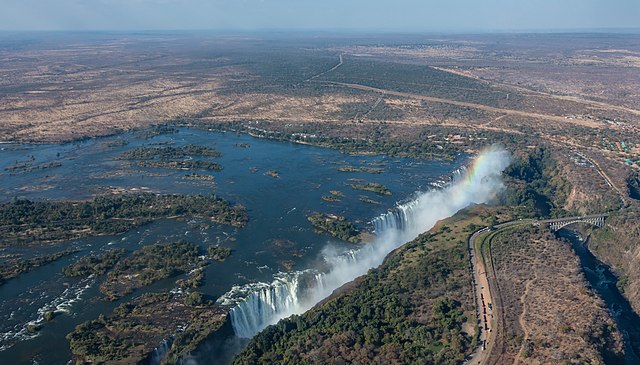
Source: wikimedia commons
But, these pools are right on the edge of the tall drops and are very dangerous. While the heat of Zambia might draw you into the cool waters, steer clear and admire the falls from afar to stay safe.
Smyrna Beach
Florida coasts are home to some of the most beautiful beaches in the U.S. While some of these beaches are perfectly safe to swim in, others are a little riskier. Smyrna Beach is dangerous for one reason: sharks.

Source: wikimedia commons
The beach has even become known as the shark capital of the world. You can only imagine how many shark attacks have to happen in one palace before it earns that name. We’ll be staying on the sand here.
Bolinas Beach
California is known for having some very habitable and pleasant beaches. You’ll see swimmers and surfers splashing around all year long! But, it is also home to some dangerous ones. Bolinas Beach is part of the Red Triangle, which is home to many great white sharks.

Source: wikimedia commons
The Red Triangle has become known for being inhabited by great whites because they go there to fetch some lunch. Seals and fish are plentiful so they know they’re in for a good meal. Steer clear so you don’t become their next meal!
Queensland
Australia is known for being home to many large, scary, and deadly creatures. Queensland in Australia is home to more than just one of these deadly beasts. Sharks are only one of the predators that live in these waters.

Source: wikimedia commons
Saltwater crocodiles, stonefish, and jellyfish are just some of the deadly creatures that call Queensland their home. Specifically, the blue-ringed octopi and box jellyfish are deeply deadly. A sting from a box jellyfish can result in cardiac arrest.
The Strid
The Strid is a small body of water in Yorkshire, England that does not immediately scream, “Danger!” In fact, the reason it is so dangerous is that it does not immediately appear to be so. It is very unassuming.

Source: wikimedia commons
The body of water hides very small and strong currents that can quickly pull you under in a matter of seconds. The currents can pull you under rocks and trap you, so we recommend you avoid it.
Reunion Island
Reunion Island might sound like the next place you want to get the family together for a family reunion, but we would strongly advise against it. It’s become known as one of the shark capitals of the world.

Source: wikimedia commons
There has been a record 39 shark attacks on this very small island. Many people still dare to swim in the beautiful waters, but they run the risk of coming face to face with these scary beasts.
The Gulf Coast
The Gulf Coast in the United States is home to some slithery creatures that are sure to scare you half to death even if they don’t bite you! Heads up; snakes can swim. And they swim here in the Gulf Coast in large numbers.

Source: wikimedia commons
The Southern United States is very humid and it might be tempting to escape into the waters of the coast, but you may be met with giant snakes beneath the surface. This includes rattlesnakes, who can have a deadly bite!
Blue Lagoon
The Blue Lagoon is another accurately named body of water. It is also another one of those places that lures you in with its beauty, but remains extremely dangerous and should be avoided at all costs. The pH level is 11.3, which is extremely high!

Source: wikimedia commons
That leaves the alkalinity at the same level as ammonia or bleach. Personally, we don’t want to swim in bleach. To give you an idea of this danger, if ammonia leaks into a local lake it will be completely quarantined. Steer clear!
Citarum River
The Citarum River is located in Indonesia, which is also home to lots of coffee, stunning shores, and incredible biodiversity. Each of the different islands is home to different species.

Source: wikimedia commons
The Citarum River; however, is not a palace you should go for a swim. The river is completely polluted by trash to the point where it is not inhabitable for humans and most animals. It’s a sad example of humans destroying natural habitats.
Hoover Dam
This is such a dangerous location to swim in that it is actually illegal to do so. One of the reasons for this is that the currents are so strong. Unfortunately, the currents have dragged many swimmers to teh bottom.
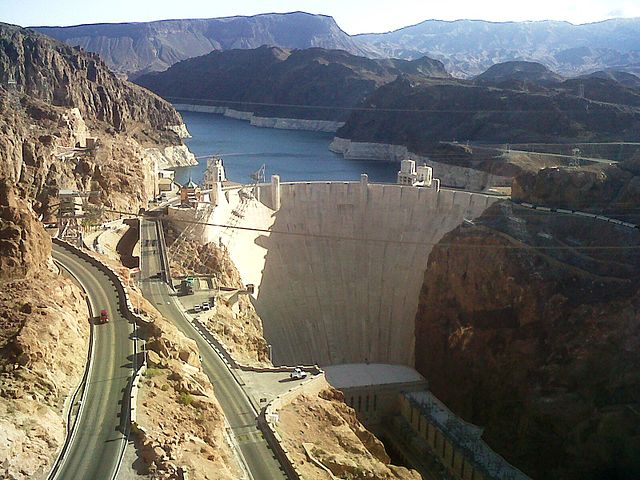
Source: wikimedia commons
Hence why they made it illegal to swim there because it posed such a threat. Have we convinced you not to swim here yet?
Gansbaai
Gansbaai is off the coast of South Africa and come to be known as shark alley. Can you guess why that might be the case? While shark attacks aren’t as frequent as you might imagine, they do happen.

Source: wikimedia commons
And if you swim in an area where there are a great number of them you are increasing your risk! So, with this information, you can make the decision for yourself on whether you want to swim in Gansambaai.
The Ganges River
The state of The Ganges River is a direct reflection of industrialization. While our economy, infrastructure, and technology are all due to great strides in industrialization, some places suffer as a result.

Source: wikimedia commons
In this case, The Ganges River in India has become uninhabitable and very dangerous to swim in. The water has been polluted with plastic and other trash from humans. Now, The Ganges River is too toxic to swim.
Rio Tinto
The Rio Tinto in Spain is tinted red from mine runoff. While the red color might look somewhat beautiful and inviting, it is most definitely not safe to swim in. The waters are completely toxic, in fact.

Source: wikimedia commons
The mine runoff makes the waters very acidic, to the point where it is somewhat corrosive! Enjoy it from afar and spend your time swimming in a less acidic body of water.
Horseshoe Lake
Horseshoe Lake is a stunning body of water located in the mountains of California. This is another stunning example of a lake you might want to dip your toe in, and it looks safe enough. But, that’s because the enemy in this lake is invisible.

Source: wikimedia commons
The waters have an extremely high level of carbon dioxide which arrived through the ground from a series of earthquakes. The carbon dioxide also killed many of the plant species in the area as well.
Lake Victoria
Lake Victoria is the third largest lake in the entire world and the single largest lake in Africa. However, some parts of it are extremely dangerous for swimmers. Tragically, more than 5,000 people have died in this lake in one year.
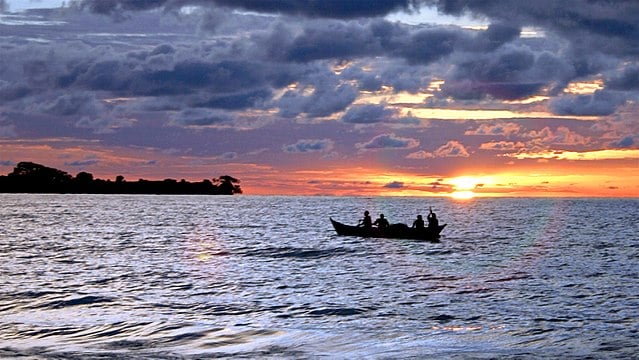
Source: wikimedia commons
The Lake has its own weather system, which swimmers might not be aware of and the weather can change in the blink of an eye. If a storm starts in the middle fo your swim, you might be stuck.
